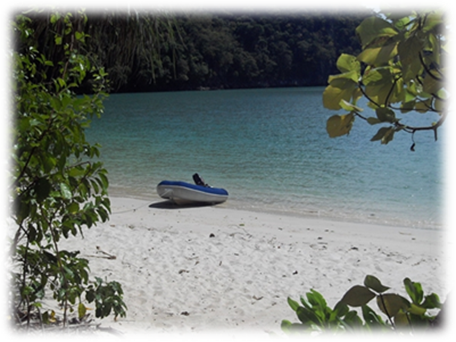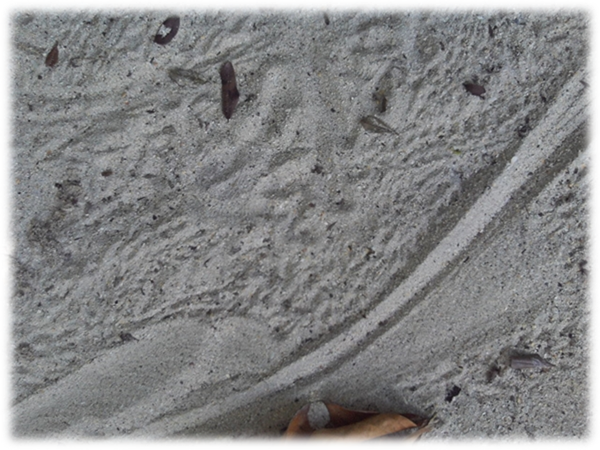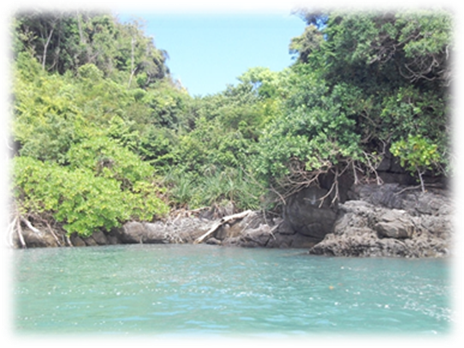Back Up North N06 29 E99 18

|
With our new solar panels safely stowed in the stern cabin it’s time to head north again to Thailand where the best boatyard services are available. Boat Lagoon on Phuket Island boasts every trade and service one could wish for and we now need a steel arch at the back of the boat to carry the solar panels high over the stern where they will get maximum sun exposure. Since we had the new sprayhood and mainsail lazy bag made, the bimini cover has quite suddenly given up the ghost. The inevitable stitching is once more adrift, it has been sewn severally already, zips have lost their teeth and there is unwelcome leakage into the cockpit when it rains heavily so time for a change. We need steel and canvas workers Before leaving Langkawi we promised ourselves a couple of days in a tiny anchorage we had found. Bounded by three small islands, once inside it is like a lake and the sea cannot be seen. Very peaceful and flat as a fluke with a deserted beach round the corner – gorgeous.

We shall definitely return to this little haven when we travel south again to round the tip of Singapore en route to Borneo but now it’s off to the Thai Butang Islands, an isolated group north west of Langkawi where sea gypsies live. Happily checking out from Malaysia can be done in Telaga going north so Gryphon II was later anchored in the bay there. The Harbour Master was off duty so we had to wait until morning to check out but it was all very quick. Up to 7 days are allowed after leaving Langkawi before one must check in with Thai Immigration, Customs and Port Control at Ao Chalong which is much further north on the island of Phuket. This means we can take our time visiting some of the islands en route that we haven’t been to before. It was quite a lively passage to the Butangs, we encountered Ko Lippe first, this is the smallest and lowest of the three main islands where there is a water gypsy village of wood and thatch but the resort developers are moving in so how long that will last is anybody’s guess. We decided to move on to the other two main islands which are steep and jungle covered, we were unsure where to anchor for a peaceful night as the tide was very strong and a bit choppy but fortunately, because there are few visiting yachts, were able to pick up one of only three mooring buoys off the rugged beaches on the west of Ko Adang. As the evening drew in we watched a large monitor lizard swish its’ way across the sand to the shore then saunter back up to the high tide mark where it started digging and flopping down at intervals, we thought it might have found a turtle’s nest and could smell the eggs or was perhaps digging its own nest. As the sun set it lay down in the warm sand and stayed there. Next morning it had gone but when we went ashore there were plentiful tracks. 
Foot and tail prints, it was about 4 or 5 feet long. We found where it had been digging but there didn’t seem to be a nest of any sort. The current here was too strong for swimming so a quick dip holding on to a rope thrown into the water was the only way for cooling off. Because this group of islands is quite far out into the Andaman Sea the snorkelling and diving is said to be very good as the coral is unspoilt. A snorkelling spot off a small island at the north end of Ko Butang is recommended in the pilot book for this area so we sailed off to find another mooring buoy up there. As we went along the coast of Ko Adang there were very small villages tucked back in the shade of the trees, we only saw them because of the longtail boats pulled up on the shore and the colourful laundry put out to dry on lines strung across the beaches. The swimming at Ko Butang was wonderful and the coral was indeed excellent but due to the week of disturbed seas visibility was disappointing and the reef fish were sparse. The water was quite cold and we should have worn wet suits but hadn’t bothered as we’ve become used to warmer water. Quite tired we decided to have an early night and leave early next morning for Rok Nok. |

